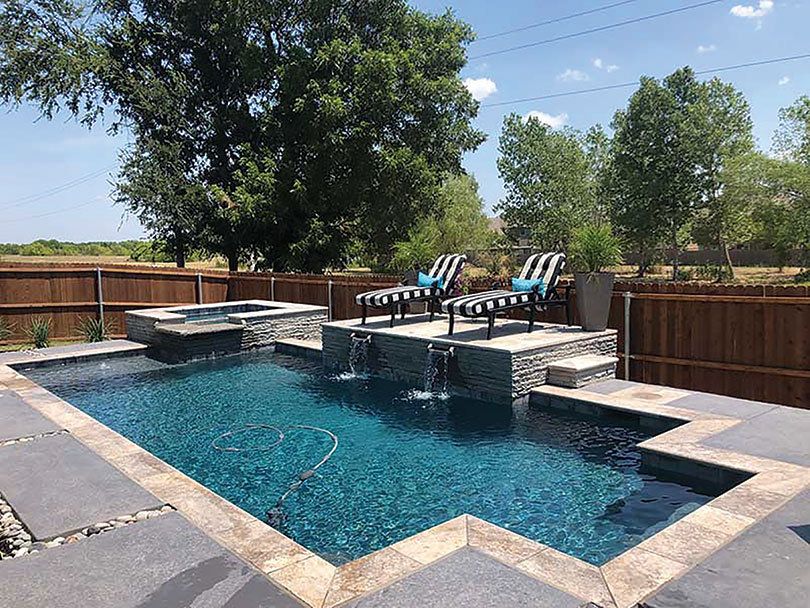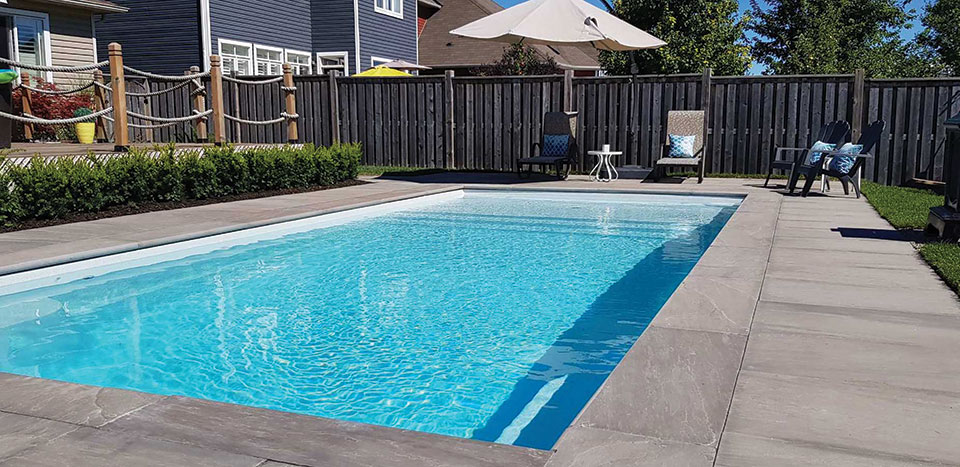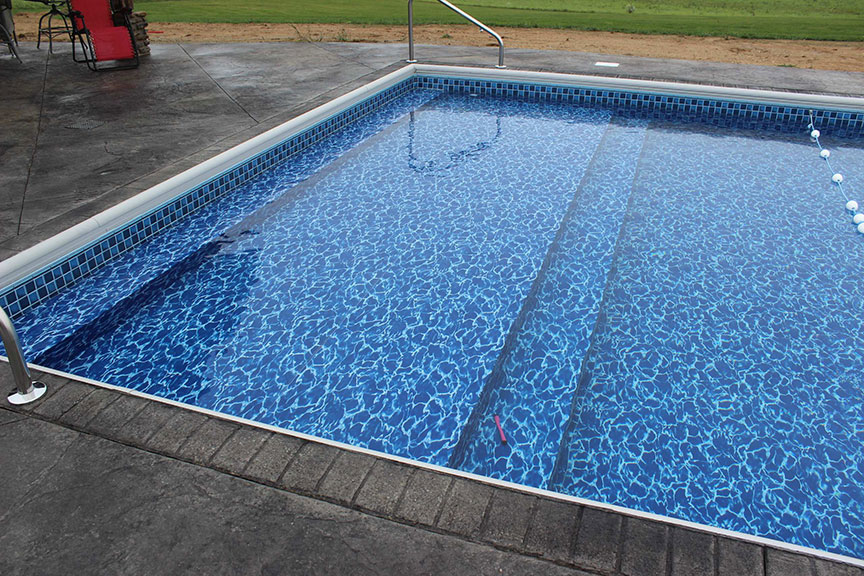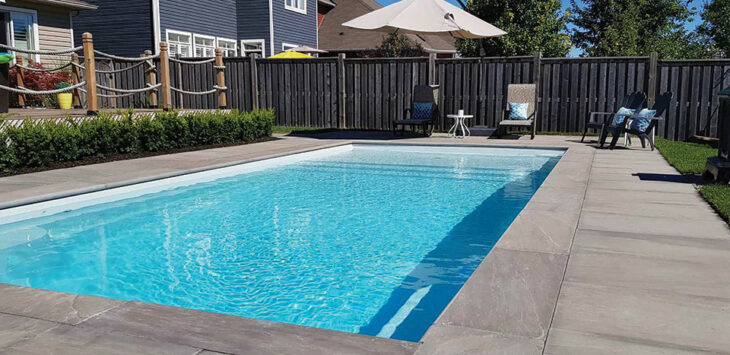Pools can provide hours of fun and be the centerpiece of your backyard oasis. They’re also a substantial investment — so you want to make sure you choose the type of pool that’s right for your property and your lifestyle.
HERE ARE THE BASICS OF SOME OF THE MOST POPULAR POOL TYPES:
GUNITE

Gunite is a time-honored installation technique that has held its popularity for decades. The structure is reinforced with a rebar framework, and the steel reinforcement provides a solid foundation that ensures longevity. Next, gunite – a combination of sand and concrete — is applied and forms the pool’s hard shell.
Pros and cons:
- Durable and built to last.
- Tend to be more customizable if you want a unique or specialized shape
- Tends to look more natural and blends well with other landscape features
- Can take up to three months to complete, and the process is much more difficult than alternatives
- Depending on your climate, gunite can require more frequent repair. The porous surface also facilitates algae growth.
- Can be relatively rough and abrasive
FIBERGLASS

Fiberglass is popular for its ease of installation and maintenance. The process starts with excavation. After properly leveling and laying the foundation – usually gravel – crews put the fiberglass shell in place. PVC piping is laid beforehand to enable plumbing, and finally, the gap around the shell is backfilled.
Pros and cons:
- Relatively low cost of labor and financial investment on a regular basis
- Takes a few weeks, not months, to design and install
- Smooth, non-abrasive surface
- Resists damage and is simple and not as costly to fix
- Installation is less complex than other options.
- Heats up fast and retains heat better
- Shells usually are prefabricated — meaning there’s little room for creativity or adjustment.
- Logistical constraints can be expensive, depending on how far the frame must travel and the support required, and there’s risk of damage en route.
- If installed improperly, shells can crack or bulge. Also, the quality of the gel coating can vary.
VINYL-LINED

Vinyl-lined pools have a custom-made vinyl sheet installed over a rigid frame. After excavation, builders install and secure the pool wall panels. The floor is leveled with sand or a cement-like material, and the liner is vacuumed into place.
Pros and cons:
- Relatively quick installation
- Opportunity for customization — can be virtually any depth or shape
- Relatively easy to maintain and repair
- Liner material is soft, smooth and not porous
- Tend to have a higher lifetime cost, as vinyl liners last five to nine years on average
- The pool must be used with care, as liners are generally about the thickness of several sheets of paper and susceptible to damage.
- If you go to resell your house and the liner is over three to four years old, there’s a good chance the buyer will want you to replace it — a multi-thousand-dollar proposition.


